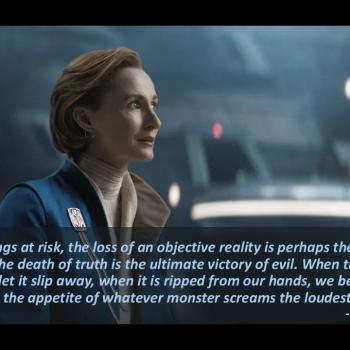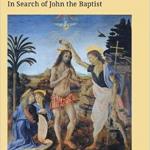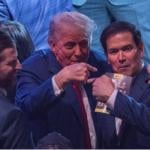In Part One of his book Adventures in the Spirit: God, World, Divine Action, Philip Clayton explores the methods of philosophy and theology. Chapter 1 is entitled “Critical Faith: Theology in the Midst of the Sciences”, and it begins by setting forth the goal of the studies included here, which is “to develop and defend a form of contemporary theology that shares in the adventure of human inquiry across the sciences and philosophy, across the humanities and the world religions, while maintaining contact with the broad tradition of Christian belief and practice” (p.22). He then lays out six major theses as the starting point for all that follows, making for a single page as a power-packed starting point. I will not list all the theses, but they included statements such as “Theologians cannot simply presuppose the truth of the Christian tradition but must be concerned in an ongoing way with the question of the truth of their central assertions” and “Although a deep and genuine engagement with the sciences and philosophy brings with it certain risks, theologians have no choice but to make themselves (and their conclusions) vulnerable in this way” (p.22).
Clayton then proceeds to explain that he is attempting to articulate an approach to theology, and to critical faith, that does not yet exist, but which is necessitated by the current context within which theology is done (p.23). He takes it as an encouraging sign that attacks against such a position come from both sides: conservatives criticizing the embracing of doubt and the revision of traditional theological positions, radical liberals criticizing the preservation of so much from the Christian tradition (p.25). One of the greatest challenges to an honest faith is “to acknowledge the possibility of the impossibility of religious belief” (p.25) – in other words, to accept that even the question of the existence of God must be subjected to scrutiny, and its status as controversial in our time must be acknowledged (p.26).
As an example of this sort of approach, Clayton turns to the writings of Wolfhart Pannenberg (pp.26-29). Pannenberg acknowledges that, if history proves unable to demonstrate the resurrection of Jesus, “faith” cannot do what history cannot. Looking for assistance for those who do not find Pannenberg’s historical arguments for the resurrection persuasive, Clayton next turns to Charles Peirce (pp.29–32), advocating his approach to truth as a guide to the theological enterprise. Peirce’s view reminded me of John Hick’s notion of “eschatological verification” – truth is defined as that which those who investigate a question are ultimately fated to agree upon, but in the mean time, we may be left in the midst of the process of seeking truth, as yet unable to be certain about the outcome of the process. One consequence of understanding the quest for truth – and thus the task of theology – as a process is the inevitablity of the need for ongoing reformation and reformulation of doctrines and theological concepts (p.33). The risk in such an approach is acknowledged, but the alternative represents for Clayton a return to the Dark Ages, an attempt to use the scriptures of one’s religious tradition to justify basing theology on “outdated scientific cosmologies and empirically false claims about the world, rather than basing theological reflection on the best available knowledge we have about the universe” (p.35).
Clayton argues (p.36) that this approach is inherently Christian because it takes seriously Jesus’ call to serve rather than be served (Mark 9:35):
The theology that exists in the midst of the sciences is a kenotic discipline, from the Greek kenosis, “self-emptying” (see Phil 2:5-8)…We will find that the stance that is most foreign to theology is to “lord it over” others (Mark 10:42) – to stand, as it were, above the fray of the human pursuit of knowledge and to claim for oneself, a mere mortal, that final position of authority that belongs to God alone. Yet is that not precisely what one does when one dismisses the best results of the human pursuit of knowledge from the standpoint of (one’s particular understanding of) divine revelation? Far better to have acted in humility and to have claimed less for oneself than one might otherwise have done, leaving it to history and to the progression of knowledge to vindicate, or to falsify, one’s own position in the end.
In chapter 2, Clayton compares religious and theological truth, asking what the unique methods of theological inquiry are and how we know what we know about God. In other words, he explicitly raises some of the most challenging questions about the basis of the theological enterprise. After some consideration of the question of how science is defined and what its methods are, Clayton suggests that religious truth should not simply be defined as the opposite of science, however easy it has proved to do so. Examining the nature of science and religion in light of recent studies, Clayton eventually notes the irony that a significant number of contemporary religious believers have significant doubts about the truth claims of their tradition, and thus it may be that many “religious believers may actually evidence a more tentative, hypothetical stance toward their beliefs than many scientists do” (p.47). As the chapter nears its conclusion, Clayton suggests that religion and science have more common ground than has often been acknowledged, but neither are they simply identical in their methods and approaches (pp.49-51).
Chapter 3 turns to a tough question for the contemporary dialogue between religion and science: is it really a “new adventure for theology” or merely an attempt to hijack science in a quest for religion’s legitimacy? Unless core religious beliefs are opened to scrutiny as part of the dialogue, the question becomes a legitimate accusation (p.52). The advantage of a critical approach is that, even though there is no guarantee that the results will be true, nevertheless “rational discourse offers our best available means for recognizing and eliminating bias and prejudice and for maximizing the odds of holding true beliefs about the world” (p.53). Using the notion of “traction” to illustrate the importance of seeking to substantiate one’s claims, Clayton then describes three possible stages in the dialogue between science and religion. The first stage is “mere dialogue”, while the second stage involves a “committment to withdraw those assertions that are counter-indicated by the overall available evidence” (p.54). The third stage is a “most demanding type of science-religion discourse” which “embraces the full intent of the Peircian-Habermasian procedural account of rationality”, not merely withdrawing claims that are counter-indicated by the evidence, but actively seeking to maximize traction between religion and science, and seeking those conversations that can lead to this end (p.56). Such a stage-three committment to rationality will require “a religious faith that can co-exist with high levels of uncertainty and openness to change” (p.57), and Tillich is shown to have already anticipated many characteristics of what such a faith would need to look like. The sort of religion that engages science in this way is not that of the private sphere of personal experience and preference, but is in essence metaphysics. “The theology (or metaphysics) that comports with science must be hypothetical, pluralistic, fluid in its use of empirical and conceptual arguments, continually open to revision” (p.61).
Stage three discourse means that “The scientist and the religious believer can share the same motivation: to extend human understanding as far as it will go…If the mystery of reality is infinitely deep, no progression of understanding threatens it” (p.62).
The remainder of the book represents Clayton’s own attempt to put his approach into practice, and it is appropriate to emphasize at this stage that, regardless whether one finds this or that individual conclusion in the remainder of the book persuasive, the approach to theology in the present age set forth thus far is provocative, challenging, insightful, and compelling.
Blog posts on parts 2-5 will follow. If you can’t wait, Bob Cornwall is already way ahead of me…












